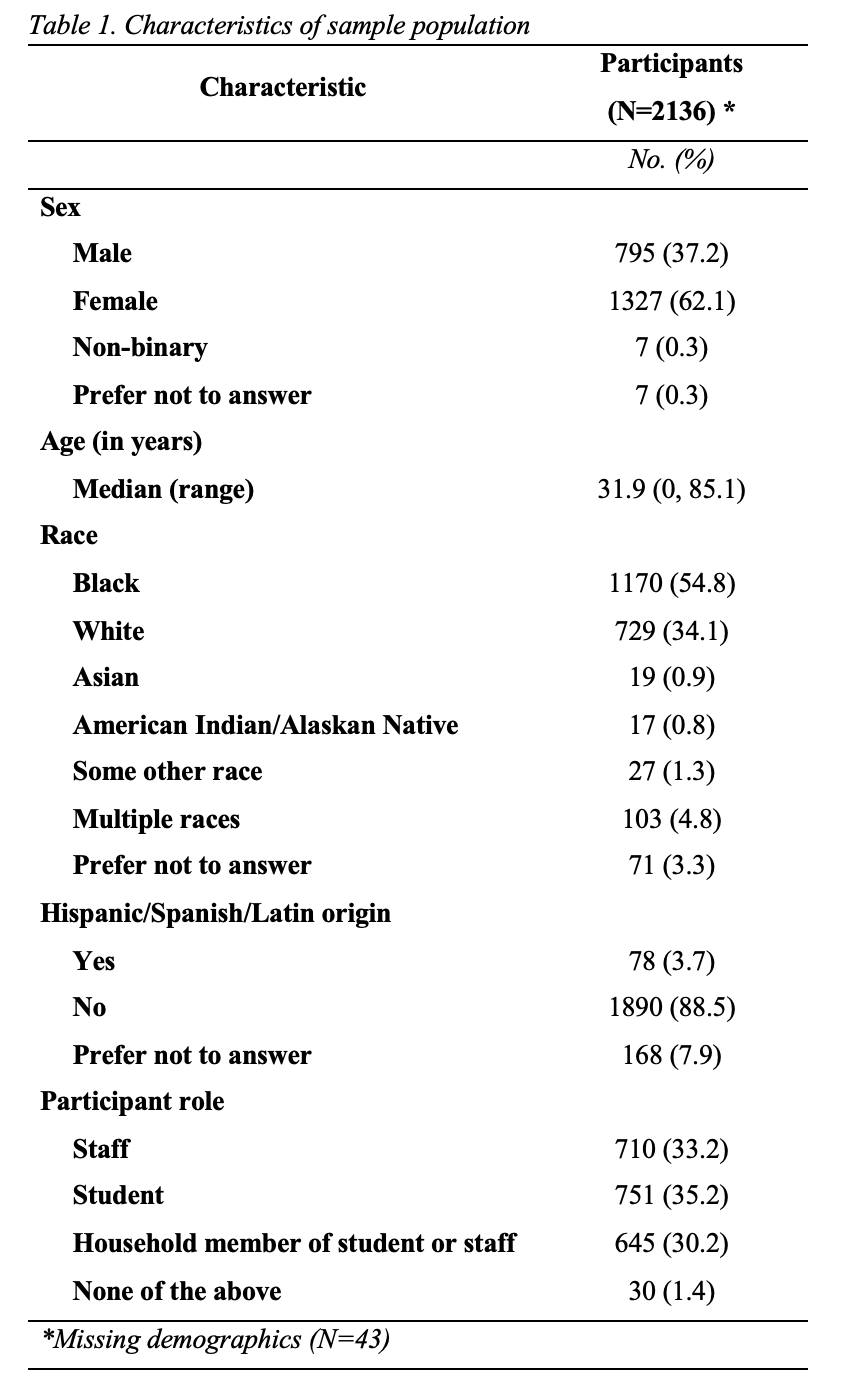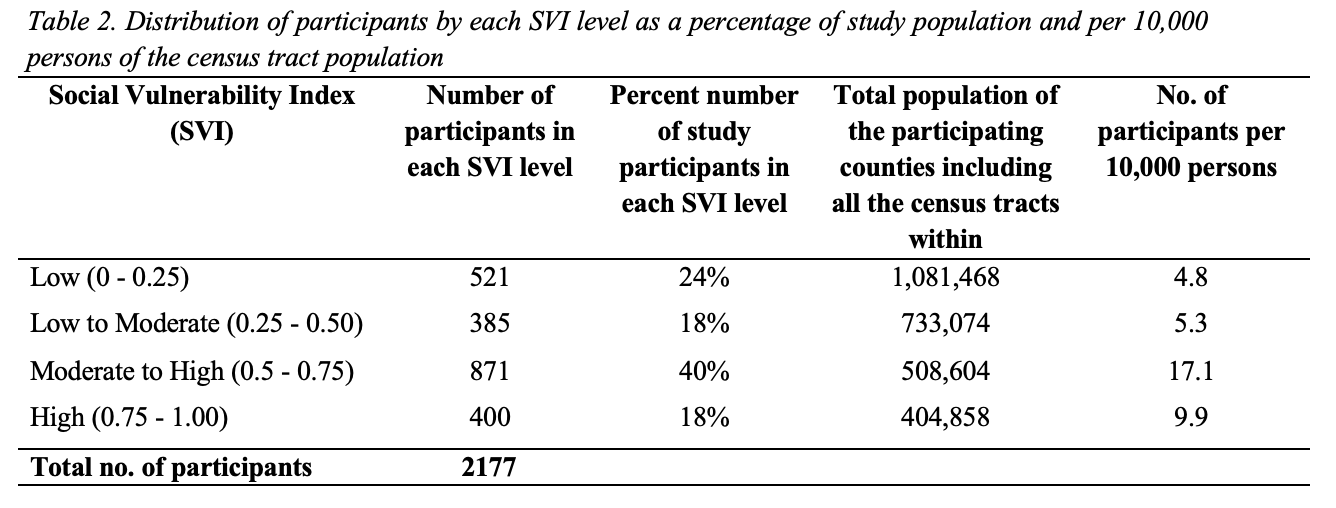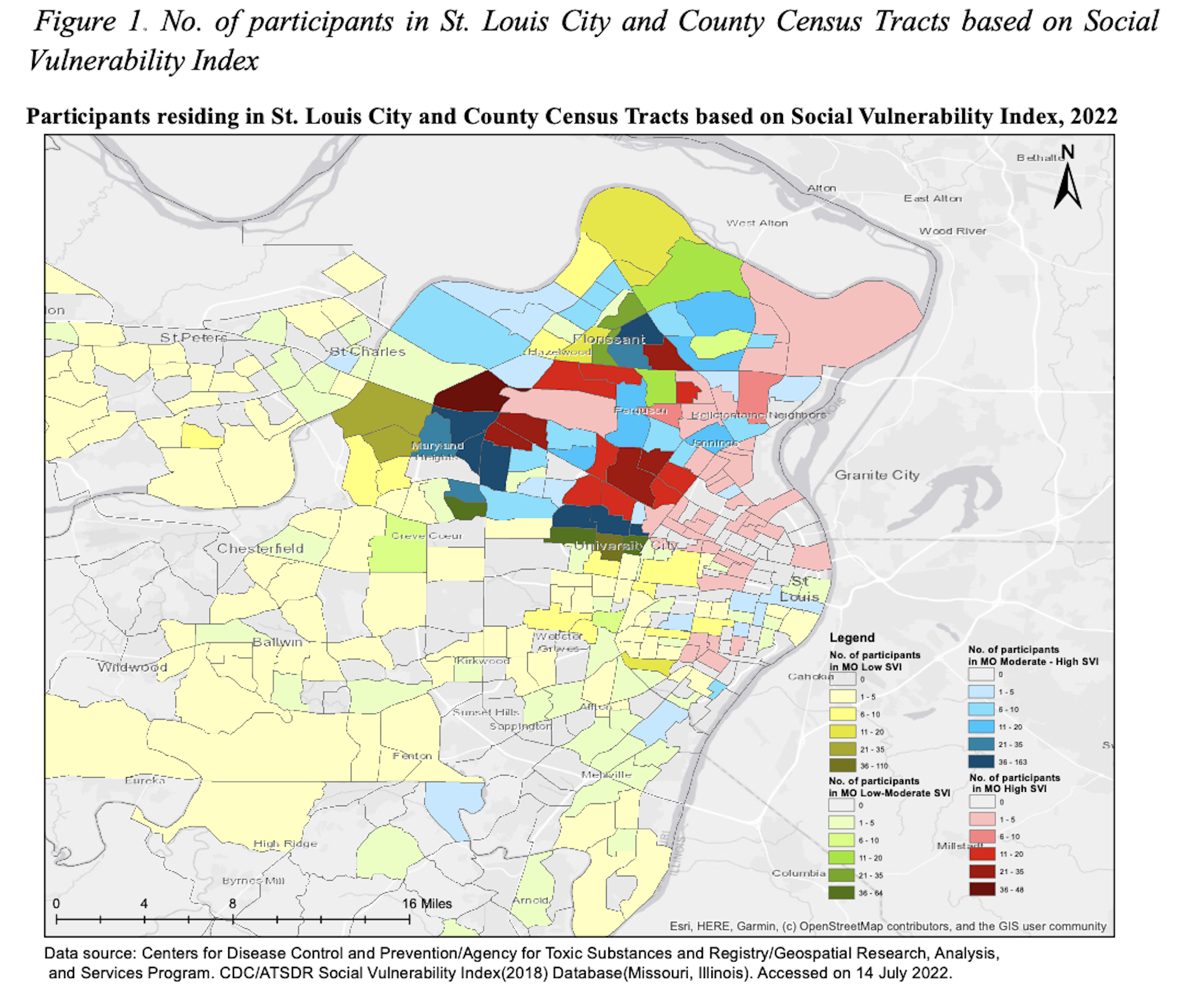Health Equity/Social Determinants of Health
Health Equity/Social Determinants of Health 6
654 - Assessing COVID-19 testing intended for underserved populations using CDC’s Social Vulnerability Index in the St. Louis region
Sunday, April 30, 2023
3:30 PM - 6:00 PM ET
Poster Number: 654
Publication Number: 654.317
Publication Number: 654.317
Nidhi Shinde, Washington University in St. Louis School of Medicine, St. Louis, MO, United States; Tyler Walsh, Washington University in St. Louis School of Medicine, St. Louis, MO, United States; Summer M. Reyes, Washington University in St. Louis School of Medicine, Saint Louis, MO, United States; Sydney A. Reyes, Washington University in St. Louis School of Medicine, St. Louis, MO, United States; Jason G. Newland, Washington University in St. Louis School of Medicine, St. Louis, MO, United States

Nidhi Shinde, MPH (she/her/hers)
Graduate Research Assistant
Washington University in St. Louis School of Medicine
St. Louis, Missouri, United States
Presenting Author(s)
Background: Widespread inequities in access to COVID-19 testing have been identified across the US, highlighting disparities among racial/ethnic minority populations. Washington University’s Safe Return to School (SRTS) study was developed to implement effective COVID-19 testing strategies in K-12 school districts that educate historically marginalized communities in the St. Louis North County region.
Objective: To examine if the project’s participants reside in socially vulnerable areas.
Design/Methods:
A cross-sectional study was performed using SRTS data and the CDC’s publicly available database for Social Vulnerability Index (SVI) in Missouri and Illinois from 2018. Analyses were performed using ArcGIS and MS Excel to estimate the percent of study participants residing in high socially vulnerable areas. ArcGIS was used to map the overall SVI theme into four levels, as defined by the CDC, including the census tracts of Missouri and Illinois where participants resided. Further, the percent of participants in each SVI were estimated to assess COVID-19 testing reach.
Results: The study included 2177 participants, among which majority are female (62.1%) and Black (54.8%). Median age of the participants is 31.9 years. Among the total participants, 33.2% are staff, 35.2% are students and 30.2% are household members of the student or staff.817 (40%) individuals reside in moderate to high (SVI = 0.5-0.75) and 400 (18%) reside in high socially vulnerable areas. Among the total population of the census tracts where participants reside, there are 17.1 participants per 10,000 persons in the moderate-high SVI level (SVI = 0.5-0.75) followed by almost 9.9 participants per 10,000 persons in the high SVI level (SVI = 0.75-1.0). The study has higher density of participants living in the St. Louis City and County region in Missouri while fewer participants live in Illinois.
Conclusion(s): The SRTS testing program reached participants residing in moderate-high and high socially vulnerable areas. A greater attention to, and proportionate resource mobilization is needed for disadvantaged counties to ensure the pandemic does not widen existing social inequalities. Future investigations need to address the structural and systemic barriers that have exacerbated the impact of COVID-19 to improve health equity.



